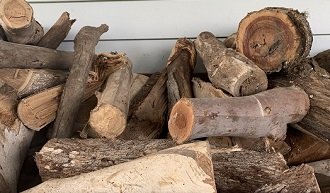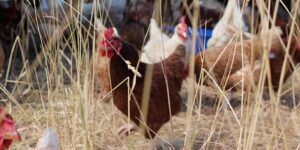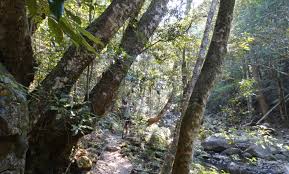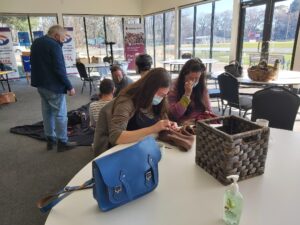If we combine forces now, we can avert climate catastrophe. But, as today’s report makes clear, there is no time for delay and no room for excuses. I count on Government leaders and all stakeholders to ensure COP26 is a success.
(United Nations Secretary General speaking about IPCC report on climate change, described as a Code Red for Humanity .Cited in Transition Australia newsletter, 19/08/21)
Ethereal yet familiar, the dawn chorus is a constant amid chaos. What we are listening to is ancient, evolved over millions of years. So in a sense, we can relive the past. Our ancestors woke up to bird song, and the quiet time of dawn is an invitation into times of aural peace before the industrial revolution. Humans have also learned that singing birds means safety- it’s when they stop singing that we should worry.
( Dumbo Feather Magazine- Music edition, July 2021, p11)
In this August edition of Localising Leanganook you can find out more about:
- Castlemaine Free University
- New Economy Network
- Finding the cheapest energy provider- workshop and mentoring
- Newstead Arts Hub – Art Auction & Exhibition
- Feedback on Hepburn Shire’s draft Community Vision and Council Plan
- Letter in response to recent Intergovernmental Panel on Climate Change report
- Braided Rag Rug workshops on line
- Free Firewood for Hepburn shire residents
- Power-Saving bonus
- Healthy Landscapes guide
- Webinars to benefit Central Vic farmers
- Bendigo district ACF- responses to IPCC and monthly bush walks
- Western Victoria Transmission Network Project opposition
- Victoria Infrastructure strategy- 2021-2051- Loddon-Campaspe section
- Help shape the future of Mt Alexander shire- Community Vision
- Hepburn Wholefoods Collective- seeking feedback for strategic directions
- Bird of the month- Fan-tailed Cuckoo
- Right to Repair submission to Productivity Commission- Mend It Australia
- Wilderhoods: Create habitat and connection in your urban neighbourhood
- Mt Alexander Food Links Project- Gardening Farm Visits
- Walking Together- Towards Reconcilation
- Disability Access Guide for Mt Alexander Shire
- Resourceful Hepburn’s survey results and strategic planning
- Central Highlands App Map for Provisioning
- Fire for Healthy Country- Talking Fire
- Local Markets and MaLETS
- Radius- a new gallery supporting local artists
- Repair Cafes and Workshops
- Frontiers Wars Memorial Avenue opened in Hepburn Shire
- Wombat Forest Care- Wombat-Lerdederg National Park & more
- Platypus search- Citizens science project in our waterways
- Master Tree Grower- Community of Practice
- Building drought resilience
- Wild About Mushrooms-Alison Pouliot –a new book and a short film
- Hepburn Wind – Community Power Hub and renewable energy
- Acting Courses 2021
- My Home Network
- Seeking birdwatchers for surveys in 2021
- Mining concerns – a local letter
- Food for Thought- Re-imagining quality of life and social well being; Starting and fine tuning your cooperative; Regenerative Songlines; Well-being policy; Gut Microbiome; Local Futures webinars; Young Farmers Connect ; Against Nature Writing. –
1. Castlemaine Free University
What: Creatively Embodying the Balance
When: Monday 6 September 2021 7pm–9pm
WHERE? Northern Arts Hotel, 359 Barker Street, Castlemaine, 3450
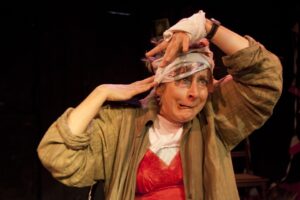 Entitlement and trauma are sabotaging the planet. While we can’t do a lot about entitlement, we can certainly heal trauma. This talk looks at the importance of the body and the arts in healing trauma. Many of the new psycho-sensory trauma therapies have been developed through dance and the theatre arts. What is the role of creativity in healing? And what impact could this have on our future? Karen sings and performs excerpts from her plays to enhance our understanding of the role of embodiment and creativity in healing.
Entitlement and trauma are sabotaging the planet. While we can’t do a lot about entitlement, we can certainly heal trauma. This talk looks at the importance of the body and the arts in healing trauma. Many of the new psycho-sensory trauma therapies have been developed through dance and the theatre arts. What is the role of creativity in healing? And what impact could this have on our future? Karen sings and performs excerpts from her plays to enhance our understanding of the role of embodiment and creativity in healing.
WHO?
Karen Corbett is a highly awarded writer, performer and theatre director. She won the German Medal of Ulm for her one-woman show Orphanage of the Animals — in this image performing a dog, ‘World’s fucked, you’re an idiot if you reckon it’s not.’ She won the Murray Sutherland Prize for Outstanding Achievement and Contribution to Theatre for one-woman show To The Outside World. She co-authored the play on Sylvia Plath’s life, The Girl Who Wanted to Be God, which was nominated for two Premiere’s Awards and had seven productions. Her play on the life and creativity of artist Frida Kahlo toured nationally. On a brief break from her trauma therapy practice, she is performing in unHOWsed, a theatre project she co-devised on older women’s homelessness.
FREE — but drinks at the bar must be purchased
Castlemaine Free University — https://anitranelson.info/cfu
2. New Economy Network
RE-IMAGINING QUALITY OF LIFE – webinar series with University of Newcastle, has its own dedicated webpage. Visit the webpage for all the recordings in this series
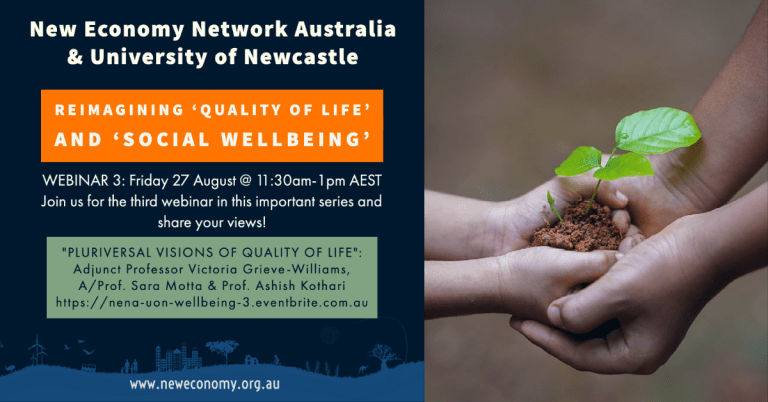
Note: While this webinar has already been held, it’s still possible to listen to a recording via the NENA website
3. Finding the cheapest energy provider- workshop and mentoring

Energy bills are expensive, and sometimes too expensive. Changing retailers, or when appliances are used, can result in cheaper bills. This workshop at Castlemaine Community House will help people learn how to get the cheapest bills for themselves, then mentor others – about once a month – as they are referred to Castlemaine Community House.
When: 1.00pm – 3.00pm, Thursday 16 September
Where: Castlemaine Community House
Instructor: Frank Forster, Newstead Enviro Shop
Cost: Free
After training people should be willing to help mentor another person, referred to Community House, no more than once a month. The EnviroShop Newstead was established in Castlemaine in 2014 to provide renewable energy and energy efficiency products and services to customers in central Victoria.
To book – https://www.socialplanet.com.au/activity/view?id=3229
4. Newstead Arts Hub – Art Auction & Exhibition
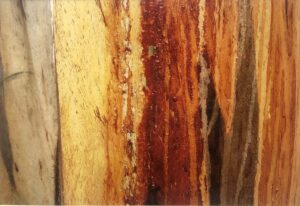
Date postponed due to covid lockdown. Check website for further details https://newsteadartshub.org/portfolio/artauction/
Where: Newstead Arts Hub,
Celebrating the arrival of spring and warmer weather, and just prior to our Hub undergoing renovations that will bring new life to the building, the Art Auction is a vital event on our calendar. Every year this event is held to raise the funds necessary to keep the Hub doors open and community arts alive in our beautiful country town. This year, the auction has faced immense challenges in the form of lockdowns and rescheduling over many months, but with some perseverance the committee has again locked in a date and is ready to put on a marvellous evening for all attendees.
All of the art to be auctioned can be viewed on the Arts Hub website, or previewed on the morning of the auction. Or you can wander the gallery while enjoying a glass of wine just before the auction starts. Pick your favourite works ahead of the event! We have a beautiful collection of works available for your bids, all donated by the artists, collectors and galleries that make our arts community so strong. With work from well known artists as well as local and talented treasures, there is a bounty of work to bid for.
Come and join us for a wonderful night filled with people coming together to celebrate and support the continuation of rural community arts.
Art and tickets: https://newsteadartshub.org/portfolio/artauction/
Image: Janet Barker, Bark series, untitled
5. Feedback on Hepburn Shire’s draft Community Vision and Council Plan
Hepburn Shire Council is seeking community feedback on the draft Community Vision and Council Plan, which includes a Municipal Public Health and Well-being Plan. These Council strategic documents have been developed following community consultation as part of the Hepburn Together Project.
Read the draft Community Vision and Council Plan (including Municipal Public Health and Wellbeing Plan)
6. Letter in response to recent Intergovernmental Panel on Climate Change report
A damning report on the state of the global climate released today by the IPCC (International Panel on Climate Change), tells us that the average global temperature is now 1.2 degrees higher and is set to rise to 1.5 degrees or higher by 2030. This would exceed the limit set in Paris in 2015 and agreed to by most of the world’s countries. This seems to have concerned Scott Morrison so much that he went on national television today to assure us that, despite the dire predictions in this report, he was confident that we would be able to “fix it with technology”. He mentioned carbon geosequestration, electrification of transport and made a passing remark about “Snowy 2”, a pumped hydro scheme (that is years and years away), but there was no detail about the mysterious “technology” that is going to be the magic fix for our energy future. He did not mention the items that would really make a difference such as abandoning his “gas led recovery” that would drive already-high carbon pollution to extreme levels, or that his government would remove the subsidy from fossil fuels. He said that mines are making changes in the way they operate, but the only changes that I am aware of are that more and more coal is being mined for export, so that emissions that should be accredited to Australia are being accredited to China or India, or wherever it is that they are being burnt. I beg of you Prime Minister, please take the predictions in this report seriously. If you act now, you can prepare and implement a plan to transition from coal to renewables. If you do not act now it will be too late.
Trevor Scott, Castlemaine, trevorscott3@gmail.com, published in the Castlemaine Mail, 13/8/21
7. Braided Rag Rug Workshops Online
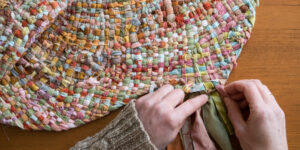
This is a preliminary trial, and there will be plenty of free firewood for everyone in the community, following the trial. Given not everyone has access to the internet, following this trial, there will be measures in place to ensure everyone is able to book a time to collect a load of firewood.
9. Power-Saving bonus
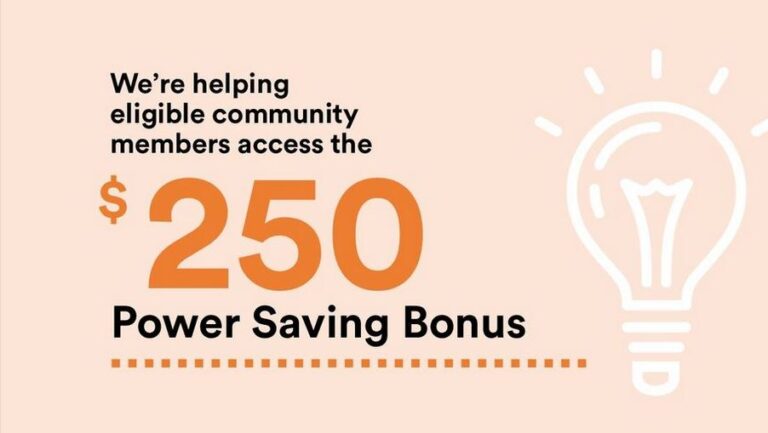
The Victorian State Government’s Power Saving Bonus is a one-off payment to help eligible Victorians* experiencing energy bill stress.
Available until 31 January 2022, if you need help applying for this bonus online, Castlemaine Community House can help.
* To be eligible, someone in your household must have a pensioner concession card or receive JobSeeker, Austudy, Abstudy or Youth Allowance.
Here’s links to the online information:
- To apply with CCH support – https://cch.org.au/power-saving-bonus/
- Link to apply without CCH help – https://compare.energy.vic.gov.au/#/
10. Healthy Landscapes guide
Connecting Country’s Healthy Landscapes guide has been developed to assist local farmers and landholders to manage their land for multiple outcomes, benefiting wildlife, property and landscape health. It is targeted to the Mount Alexander region of central Victoria, which makes it unique to our special local area. It forms part of Connecting Country’s Healthy Landscapes project, a Smart Farms project that delivers a series of educational workshops and a land management guide for landholders.

The Healthy Landscapes guide provides background context on our region’s natural assets, as well as eight concise sections on actions landholders can take to protect and restore habitat on their properties in central Victoria.
Topics included in the guide are:
- Protecting remnant vegetation.
- Make a plan.
- Control weeds.
- Control rabbits.
- Revegetate your land.
- Help hollow-using wildlife.
- Manage your dam as habitat.
- Care for paddocks.
The guide features a variety of images, such as these on the front cover from Bronwyn Silver (bush sunset), Jane Satchell (gnarly wood) and Geoff Park (Yellow-footed Antechinus).
‘Landholders often ask us about where they can find information relevant to our region on how to manage their land to benefit the environment and farming,’ said Jacqui Slingo (Landscape Restoration Coordinator at Connecting Country). ‘We are thrilled to have produced a guide that allows landholders, especially the many new property owners in our region, to get started with caring for their property by protecting native vegetation and wildlife habitat through actions like weed and rabbit control.’
Copies of the guide will be offered to Landcare and community groups, and available for general sale (around $15 per copy) in Castlemaine through the Castlemaine Visitor Information Centre, Stoneman’s Bookroom and Mount Alexander Animal Welfare (MAAW) Op Shop. Please do not hesitate to contact us if you have any questions, or would like further information.
To read more about the Healthy Landscapes project – click here
Posted on 11 August, 2021 by Connecting Country: https://connectingcountry.org.au/
The Healthy Landscapes: Practical Regenerative Agricultural Communities program offers a range of free opportunities to learn about regenerative agricultural practices through individual on-farm advice; webinars, workshops and field days; a short course on holistic grazing management; and farmer discussion groups.
Participants can hear from local farmers about their journey in holistic farming through webinars in August and September. There will also be the opportunity to meet the farmers on their properties in September and learn more about farming techniques and results.
Yandoit farmer, Paul Righetti, will present a webinar session on Tuesday 31 August about his family’s shift to regenerative agriculture.
“We moved our farming system to regenerative because we believe it to be better for our soil, our pasture, our animals and customers who buy our produce,” said Mr Righetti.
This regional partnership provides free support to farmers interested in improving the health of their land, the quality of their produce and increasing their farm’s resilience to climate variability such as drought and extreme weather,” said Mayor of Hepburn Shire Council, Cr Lesley Hewitt. “The program offers knowledge sharing and access to some of the leading regenerative farmers in the region.
The Healthy Landscapes: Practical Regenerative Agricultural Communities program is a partnership program between Macedon Ranges Shire Council, Hepburn Shire Council, the City of Greater Bendigo, A Healthy Coliban Catchment project (North Central Catchment Management Authority and Coliban Water), Melbourne Water and the Upper Campaspe Landcare Network.
12. Bendigo district ACF- responses to IPCC and monthly bush walks
Bendigo branch of the Australian Conservation Foundation is developing responses to the Inter-governmental Panel on Climate Change report, 2021. Contact Marie Bonne if you would like to con tribute, Email or mobile: 0438 889 834
The new IPCC Report: Climate Change 2021: the Physical Science Basis is a stark reminder of the urgency of acting on climate change. We want to dedicate the majority of this month’s meeting to developing a range of responses to the IPCC Report and in preparation for the COP 26 UN Glasgow Climate Summit starting October 31. Anything is on the table so in preparation, we would like everyone to read the webpage with ACF Summary of the IPCC Report. Think about the 5 Big Actions the report asks us to work on and choose which one you would like to focus on.
Here is some reading from the Citizen Climate Lobby: https://au.
Monthly bush walks- 3rd Friday of each month
For further information about campaigns and to register for future bush walks: https://www.acf.org.au/acf_community_bendigo_district
13. Western Victoria Transmission Network Project opposition
Hepburn Shire Council is opposed to the Western Victoria Transmission Network project continues to advocate strongly on behalf of the community members potentially affected by the proposed project. The proposed corridors have been reduced to one which will have significant impacts on our community. Mayor, Cr Lesley Hewitt, said that Council had no notice of these changes and it was extremely disappointed in the lack of genuine consultation throughout this project.
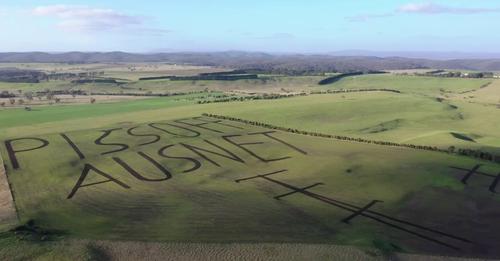
“We understand the concerns of the community and appreciate the impact that these potential transmission lines will have on their properties and also their livelihoods. We are furious that these impacts on our community have not been adequately considered,” said Cr Hewitt.
Council has been an active member of the Technical Reference Group established by AusNet to inform the Environmental Effects Statement (EES) providing as much ground truthing information to help appropriately inform the project within the best of our control. “We have been advocating strongly on behalf the community and are extremely disappointed that this appears to have had little impact”. Council has committed $50,000 in the 2021-22 Budget to fund a formal submission on the EES and continued advocacy on behalf of affected communities.
“While Council is supportive of renewable energy, it is strongly opposed to the transmission lines being above ground and the potential location of the transmission station, which will impact on valuable agricultural land and significant landscapes” said Cr Hewitt.
The following letter has been sent to 33 State and Federal Ministers, including Shadow Ministers, Members for our electorate and industry bodies such as AEMO and DELWP. Letter Hepburn Shire – WVTNP – 29072021
For more information on the Council position on this project visit https://www.hepburn.vic.gov.au/western-transmission-lines-project/.
For more specific project information please refer to www.westvictnp.com.au.
Please refer to the interactive link that will allow you a closer view of the alignment on the ground Single transmission corridor | Map Pins Feedback | Western Victoria Transmission Network Project (westvictnp.com.au)
Photo: from Moorabool and Central Highlands Power Alliance facebook page
14.Victoria Infrastructure strategy- 2021-2051- Loddon-Campaspe section
Central Vic Primary Care Partnerships has put in a submission towards this strategy. Here are some of the recommendations proposed:
- Augment electricity transmission for renewable energy and resilience
- Identify and coordinate Renewable Energy Zones
- Plan for and facilitate regional nature-based tourism investments
- Develop a Victorian Aboriginal tourism and cultural heritage strategy with Aboriginal communities
- Facilitate improved recycling infrastructure for priority materials
- Strengthen end markets for recycled materials
- Fund regional libraries to provide better internet access In the next year
- Build back better after emergencies
- Deliver multipurpose shared social service facilities in the regions
- Create climate-adapted facilities for rural communities (cool spaces)
- Rapidly renew old public housing
- Make social housing suitable for changing local climates
To look at the strategy go to: https://www.infrastructurevictoria.com.au/wp-content/uploads/2021/08/Regional-Brochure_Loddon-Campaspe-1.pdf
15. Help shape the future of Mt Alexander shire- Community Vision
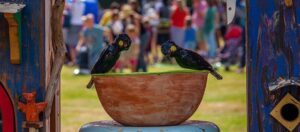
Residents are invited to have their say on projects and initiatives in Mt Alexander shire. Sharing your feedback will help Council to understand wants and needs for our region and to make informed decisions on various projects.
A first draft seeking your vital thoughts and feedback- After nearly 1,000 contributions totaling over 70,000 words, as well as community forums and engagement with dozens of stakeholder groups and partner organisations, here is the first draft of the Mount Alexander Shire Community Vision. This draft draws on the input from the first round of engagement conducted for the Your Community, Your Vision project. You can read the report before completing the survey below.
We are a healthy community that values the natural beauty of the Djaara Country we are privileged to live upon.
We also know that preserving our natural environment means living sustainably and caring for country.
We are protecting our shire from the threat of climate change by taking action at the local level.
We are an inclusive community where everybody has access to services and supports, and opportunities for housing, education, employment and creative and social pursuits.
We’re known as a vibrant place which draws upon its creative spirit and shared heritage.
We’re building a place where everyone can enjoy the beauty, history and friendliness of the shire.
16. Hepburn Wholefoods Collective- seeking feedback for strategic directions

Hepburn Wholefoods Collective have compiled a few questions about our wholefoods collective to try and get a clearer picture about our members’ experience and ideas for improvement. Outcomes will help inform our upcoming strategic plan. By helping us out, you’ll go into a draw to win free membership for a year. And If you are already a volunteer (and therefore receive free membership) you can use the prize to gift to a friend!
Fill out the survey to win free membership
Opening hours:
Mondays 9.30-11.30am
Wednesdays 2-4pm
Thursdays 3-5pm
Saturdays 11am-1pm
Location: 11 Perrins Street, Daylesford,
Membership: $40 per year, $20 per year concession, FREE for volunteers.
17. Bird of the month- Fan-tailed Cuckoo
Bird of the month is a partnership between Connecting Country and BirdLife Castlemaine District. Each month we’re taking a close look at one special local bird species. Each month there’s a different bird, seasonally adjusted, and we welcome suggestions from the community. Thanks to Jane Rusden from BirdLife Castlemaine District, assisted by Damian Kelly. Photos by Ash Vigus
Fan-tailed Cuckoo (Cacomantis flabelliformis)
More questions than answers are thrown up by this often secretive species. However, occasionally the Fan-tailed Cuckoo will show itself in plain view, as I had the opportunity to witness recently whilst doing bird surveys in the Whipstick (north of Bendigo in Victoria). The bird was hanging around, low to the ground, in a patch of Cassinia, which is good habitat for small birds. I’m sure of no coincidence…
In short, the Fan-tailed Cuckoo inhabits open woodland with dense, tall understory, preferably in a gully. Locally that means Golden Wattle and Silver Wattle, and occasionally mallee shrubs. As partial migrants, in winter it appears birds generally move north and return in spring. However, some birds remain all year.
Apparently, some birds stay close to where they hatched, others migrate and return to near where they hatched, and others move on. In short, their complicated movements are not well understood. Recapture in banding studies is low and the studies few, leaving us scratching our heads to some extent. What is obvious is that calling is heard in spring and generally not in winter. Is this due to winter migration or are they just keeping quiet?
The diet of the Fan-tailed Cuckoo consists mostly of insects, including Lepidoptera larvae (caterpillars), often foraged close to or on the ground, or in sallying flights. Interestingly, Fan-tailed Cuckoos can be found in mixed foraging flocks of the exact insectivorous bird species whose nests they parasitise. Wow, another question … why would a small woodland bird tolerate the presence of a larger bird who kills their eggs?
Talking of killing eggs, the whole point of cuckoos is that they lay eggs in other birds’ nests, who then raise the cuckoo chick to fledging. Let’s start at the beginning. Some cuckoo eggs mimic those of the host species, but Fan-tailed Cuckoo eggs do not. Their host species are Speckled Warbler, Gerygone, White-browed Scrubwren, heathwrens, fairy-wrens and thornbills. However, studies show that Brown Thornbill and White-browed Scrubwren are the most common victims. One thing in common with these species is their nests are domed or enclosed and close to the ground. At times Fan-tailed Cuckoos will also lay in cup-shaped nests built by robins and occasionally honeyeaters.
Fan-tailed Cuckoos are found throughout eastern Australia, south-western Western Australia and Tasmania.
The Fan-tailed Cuckoo will lay one egg in a host’s nest. It has been suggested that the egg is placed via their bill or by holding in the foot, but there is little evidence of actual laying. How the host’s eggs are removed is unknown. There are records of Pallid Cuckoos removing a Fan-tailed Cuckoo egg, and visa versa, from the host’s nest. Now that’s a pickle! Generally, cuckoos leave the feeding and raising of their chicks to the poor overworked host parents. However, there are a few records of Cuckoo parents supplementing the feeding of their chicks, but not reducing the work for the host birds in any way. It just means a very well-fed Cuckoo chick.
To hear Fan-tailed Cuckoo calls, please – click here
18. Right to Repair submission to Productivity Commission- Mend It Australia
Karen and Danny Ellis are co-founders of Mend it Australia2015, Mend It, Australia [MIA], a legacy project in retirement with the goal to raise awareness of reuse and repair. They live in Melton and offer their support and repair skills to assorted Repair Cafes, including Daylesford and Castlemaine.
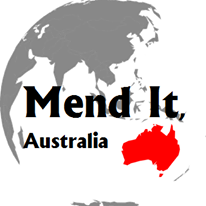
Here’s some key points from their submission to the Productivity Commission’s Right to Repair which are included in the Commission’s draft report. Their submission focussed on community repair: https://www.pc.gov.au/inquiries/current/repair/submissions#post-draft
Repair cafes are not just held in centralised community centres as stated by Melton Council, but out of homes and household garages, especially during the pandemic as well as churches, men’s sheds, parks, nurseries, cafes, libraries, warehouses, schools, town halls, resource recovery centres to name a few.
MIA’s idea was ahead of its time, however nearly a decade on and due to the nation’s waste crisis, at least communities are catching on to the benefits of collaboration when it comes to resource recovery, reuse and repair. It’s time for governments and bureaucrats to catch up and help communities deliver
grassroots initiatives that will effect human behavioural change related to waste.
Whilst there is a strong focus on advocating for consumer rights, access to repair supplies and improvements to product warranties, durability and repairability and management of e-waste, we feel the Draft Report lacks community empowerment elements. We would like to see greater support for community-led repairing initiatives such as Repair Cafes, Makerspaces and Tool Libraries.
There is mention that electrical products tend to be less repairable than other products but this can vary depending on what is bought into an event. For example two older electronic devices [laptops] were unable to be fixed at a recent repair cafe but Mend It’s Danny fixed a cheap plastic electric fan, a microwave and an electric
hand tool. That was a 100 per cent repair rate for electrical items at this event.
Here is an opportunity to address the barriers to the long-term sustainability of community repair groups seeking more long-term viability and permanent venues. The next step up from a monthly event [where people sometimes have to wait a month to get their item fixed] could be dedicated repair sheds or similar. Repair sheds have been mentioned by the Victorian State Government but no funding has been allocated to establish these. Repair centres were mentioned by World’s Biggest Garage Sale in its presentation to the APC hearing. And the Sustainability Party of Australia has mentioned supporting major community centres dedicated to the repair in its submission.
This is an opportunity to consider support for community repair groups and their volunteer repairers into the future, as the nation is being required via legislation to move towards a truly circular economy.
Recommendations
That Federal Government funding for Repair Sheds or similar is made available to establish these venues in local government areas that will be able to provide repair, reuse, and resale of items on a daily basis. Collaborations could be forged between community repair groups i.e. repair cafes and the men’s sheds in local
communities. If not collaborations, then at least venues could be shared if more types of shed infrastructure were deemed excessive.
An Australian Association is set up to support and assist community repair groups i.e. repair cafes, repair sheds or centres and repairers with government funding allocation, liability concerns and brokering insurance. Also creating and supplying promotional literature, list and map of other community repair groups and their details. This type of service could be similar to the services provided by the Australian
Men’s Shed Association [AMSA].
MRFs with TIP Shops are untapped venues for community repair, reuse and re-sale initiatives. This idea could fit in with an expanded National Television and Computer Recycling Scheme [NTCRS] before items are given up to the scheme; they should be picked-over by the TIP Shop staff and/or community
volunteers for re-sale back into the community. This process would be of more direct benefit to the local community than discarded items being
shredded by a recycler or being sent overseas for reuse and repair, especially in lower-socio economic communities.
Resourceful Hepburn aims to improve resource recovery (repair, reuse, repurpose, recycle) in their shire. Community survey responses show that the most popular suggestion in each category were: Repair: repair cafe, Reuse: Tip shop, Repurpose: Tip shop, and Recyle: Education.
For consideration, some unique resource recovery examples of repair and reuse initiatives for a truly circular economy as follows: Hobart TIP Shop; The Green Shed Canberra; ReTuna in Sweden; Rancho Grande USA; and Re-made.
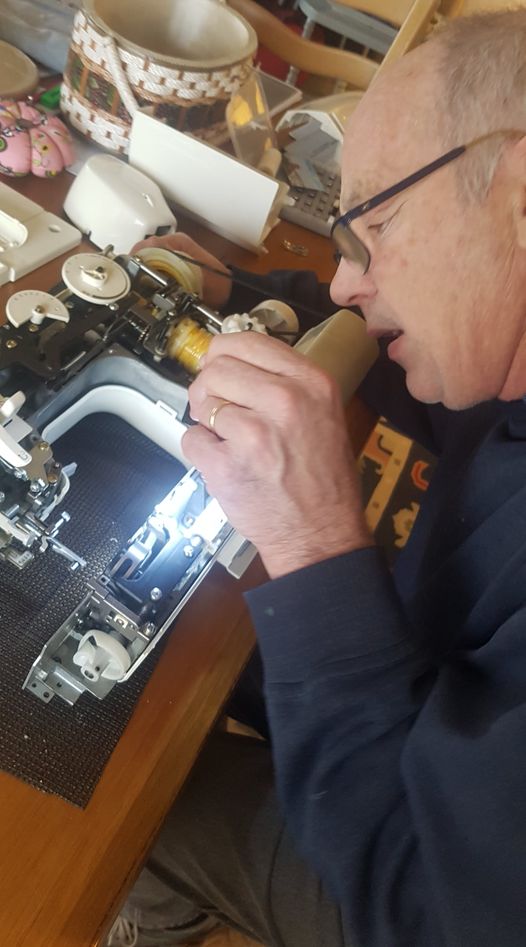
MIA commends the APC and its staff on an informative and well researched draft report and is grateful for the opportunities to write two submissions and present before a hearing. We look forward to the final report in October that provides more attention to greater support for long-term repair and reuse initiatives that are community based and community led. Mend It believes a mass cultural shift to repairing can happen and that Australia’s first National Repair Summit, is a good place to start discussions of how best to support repair at the grassroots level. It’s at this community level that some heavy lifting is being undertaken by passionate
repairers and repair advocates helping consumers keep their useful, mostly inexpensive household items and textiles from prematurely being down-cycled or sent
to landfill.
Community repair events are amazing. Mend It has repairing and mending skills that it can share. It’s extremely motivating for our creative minds to use our skills to
troubleshoot broken items. It’s the best endorphin fix to repair these items as we get to experience the repair joy! HOWEVER Free community repair activities can be fraught with challenges and barriers. Here are some of these:
1. Ad-hoc funding from benevolent bureaucrats – this begs the question why should repair people be working for free, to deliver free services and be bread-crumbing for funds?
2. Expensive insurance coverage – some brokers are reported to be refusing repair groups and tool libraries insurance coverage.
3. Liability and risk concerns are regularly flagged as issues.
4. Venue hire costs – unlike Men’s sheds governments have not committed to dedicated repair sheds or similar in their Waste and Resource Recovery Plans for a
circular economy.
5. Lack of volunteers can be an issue. However, Mend It does not agree there is a lack of expertise out there.
6. Myths about safety abound – Some of these we addressed in our submission
7. No formal support alliance for Australia’s community repairers and groups [hopefully an outcome of the summit will be to address this issue],
8. Disproportionate bureaucratic requirements for the repair activity.
9. Limited open access to manuals, diagrams and schematics – This issue could be addressed by right to repair legislation to ensure community repairers are
NOT excluded from accessing these.
10. Items that are glued shut or hard to get into, due to proprietary and hidden screws– right to repair legislation related to the design of products to address this
issue would be helpful.
11. The cost of Portable Appliance Testing Equipment, its calibration and the training of volunteers are expensive to fund. Our submission to the Commission
had some details on the lucrative business of PAT machines, testing and ongoing associated costs.
19. Wilderhoods: Create habitat and connection in your urban neighbourhood
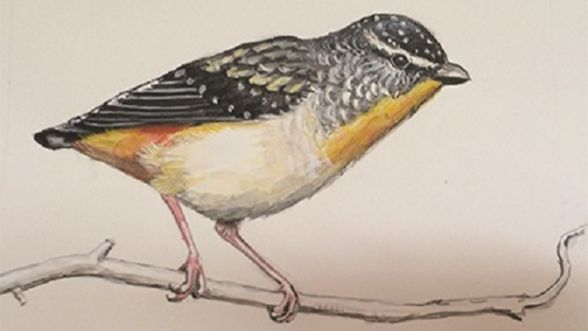 Residents interested in learning how to attract more wildlife to their local landscape are invited to attend the session Wilderhoods: Create habitat and connection in your urban neighbourhood. This session explores opportunities for creating a network of urban habitat, and ingredients for low-fire risk plantings that will improve wildlife survival.
Residents interested in learning how to attract more wildlife to their local landscape are invited to attend the session Wilderhoods: Create habitat and connection in your urban neighbourhood. This session explores opportunities for creating a network of urban habitat, and ingredients for low-fire risk plantings that will improve wildlife survival.
Local ecologist and educator Cassia Read will guide this workshop, where participants will learn how to map habitat, share knowledge of urban birds, frogs and insects, and apply wildlife friendly design principles to gardens and public neighbourhood spaces.
What: Wilderhoods: Create habitat and connection in your urban neighbourhood
When: Sunday 29 August, 10.00am to 1.00pm
Where: West End Hall, Woodman Street, Castlemaine
Book: Call 5471 1828 or book bit.ly/MtAlexBoxOffice
Spotted Pardalotes can be seen in native home gardens. Artwork by Cassia Read
20. Mt Alexander Food Links Project- Gardening Farm Visits
 Food Links is a growing network made up of the shire’s community gardens, members, partners and volunteers that aims to strengthen our local food security by supporting an increase of gardening and food growing across the shire. Later this month Food Links will be providing an opportunity to join a tour of three local commercial food growers to see first-hand how they work with soils, climate, pest management and planning to ensure the best opportunities for viable food production.
Food Links is a growing network made up of the shire’s community gardens, members, partners and volunteers that aims to strengthen our local food security by supporting an increase of gardening and food growing across the shire. Later this month Food Links will be providing an opportunity to join a tour of three local commercial food growers to see first-hand how they work with soils, climate, pest management and planning to ensure the best opportunities for viable food production.
From early next month a series of food growing workshops will begin, each of which will be held at local community gardens and venues in Castlemaine, Maldon, Newstead and Campbells Creek. The workshops will include demonstrations and gardening information.The Food Links workshops will be advertised widely so watch your socials and local networks. To be included on the Food Links network mailing list email flproject@cch.org.au
Photo: Newstead community garden
21. Walking Together- Towards Reconcilation
THE NATIONAL AGREEMENT ON CLOSING THE GAP- A message from Nalderun
A new approach to closing the gap in health, education, employment and lifestyle, all of which are experienced so differently by Indigenous and non-Indigenous peoples, was set up in 2020. When Close the Gap was initiated in 2007 it aimed to bring about equality with other Australians within a decade, and committed to monitoring the life outcomes for Aboriginal and Torres Strait Islander people. Ten years later, few of these targets were on track.

The new National Agreement includes monitoring of government actions and how they can influence outcomes. It has been built around what Aboriginal and Torres Strait Islander people said is important to improve their lives, and was developed in genuine partnership between Australian governments and Aboriginal and Torres Strait Islander peak groups. Working with Indigenous people, their communities, organisations and businesses, all governments are to implement the new National Agreement at the national, state and territory, and local levels.
For the first time, all levels of government and the Coalition of Aboriginal and Torres Strait Islander Peak Organisations are jointly accountable for ensuring that the goals of closing the gap are achieved. They will share monitoring and implementation arrangements. Four priority reforms central to the National Agreement commit governments to change the way they work with Aboriginal and Torres Strait Islander people; for example, with more support to community-controlled organisations as they deliver services. Progress they are making to reach the targets will be monitored by the Productivity Commission over the next ten years and reported annually.
Seventeen new socio-economic targets were developed, focussing on improvements in the areas of education, employment, health and wellbeing, justice, safety, housing, land and waters, and languages. Briefly stated, the targets are:
- Everyone enjoys long and healthy lives
- Children are born healthy and strong
- Children are engaged in high quality, culturally appropriate early childhood education in their early years
- Children thrive in their early years
- Students achieve their full learning potential
- Students reach their full potential through further education pathways
- Youth are engaged in employment or education
- There is strong economic participation and development of people and their communities
- People can secure appropriate, affordable housing that is aligned with their priorities and need
- Adults are not over-represented in the criminal justice system
- Young people are not over-represented in the criminal justice system
- Children are not over-represented in the child protection system
- Families and households are safe
- People enjoy high levels of social and emotional wellbeing
- People maintain a distinctive cultural, spiritual, physical and economic relationship with their land and waters
- Cultures and languages are strong, supported and flourishing
- People have access to information and services enabling participation in informed decision-making regarding their own lives
A short time ago, data on twelve months of working towards seven of the targets was released. It reported that over-imprisonment rates of First Nations adults, child removals, suicide rates and life expectancy were either not on track or actually going up. We other Australians can help close the yawning gap between ourselves and First Nations people by being informed about the hurts they suffer, and by respecting them just the same as we respect our ‘white’ colleagues and friends.
Nalderun is a service that supports the Aboriginal Community, led by Aboriginal people. Many people and organisations in the Mount Alexander Shire contribute to Nalderun; the name is a Dja Dja Wurrung word meaning “all together”.
More information can be found at www.nalderun.net.au
22. Disability Access Guide for Mt Alexander Shire

Recently the disability guide for Mt Alexander shire was launched. Here’s a link to the document: https://drive.google.com/drive/folders/1Hnt4ESmYdu7abAgfseID98zc2FlZTWIZ
There are hard copies at the Shire office front desk, Community House and the Market Building.
Thanks to the Mt Alexander Shire Disability Access Group, MASDAG.
23. Resourceful Hepburn’s survey results and strategic planning
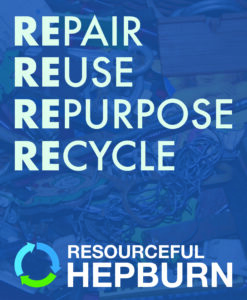
Thanks to the 102 people who completed Resourceful Hepburn’s recent survey. We’ve started posting results, one question at a time, on our Facebook page. Some great insights and plenty of community interest about improving how we reuse, repair, repurpose and recycle. Also, many fantastic ideas about how to go about it.
Overall, respondents indicated they rated the council’s performance in various resource recovery categories rather poorly and overwhelmingly indicated that a community resource recovery enterprise in Hepburn Shire would be an improvement compared with the current situation.
The results also showed that the areas of reuse and repair would be the most beneficial categories of reform for the community to prioritise. It’s so great to know our community sees the importance of taking accountability for our own waste! Keep visiting our Facebook page for the full survey results.
Successful planning day
Key outcomes were an agreed approach to formalise the group, communications with the community, and two priorities for enterprise activities – repair, upcycling and sale of useful goods/materials, and, a focus on organic waste, particularly commercial food waste composting and a community chipper.
Incorporation
Resourceful Hepburn became an Incorporated Association on 4 August 2021, and we thank Hepburn Wind for helping us with this through a $500 sponsorship. We plan to conduct our first public meeting soon. Stay tuned for details! And in the meantime, let’s all keep up the good work of being active resource recovery warriors in our own patch.
24. Central Highlands App Map for Provisioning (CHAMP)
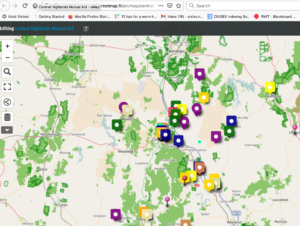
Aim: We aim to support regional resilience and community sufficiency through localising our economies. Promoting local production and use means minimising carbon emissions and other ecological impacts.
Our specific goal is to create a map of local producers/retailers of food and more with a tool (app) for use by locals to identify and access options for local provisioning. This map and app will promote and show the breadth of — and gaps in — community provisioning.
The producers included will demonstrate a strong commitment ecological sustainability and regenerative principles. It will require continual updating.
Project
Pre-project stage (completed): Scoped community need and interest. Initial pre-project trial with software and collected data for development for use in a to-be-created app.
Development stage (current): We need to work with a partner to create or adapt an appropriate app. We need funding to support this.
Contact: Mirella Gavidia — mirella.gavidia@rmit.edu.au
Support: Initially an idea of Central Highlands Mutual Aid, the project is now seeking supporters/ signatories. Please let us know by email that you would like to be a signatory. Feel free to forward to interested people and associations in your network. Email us if you can support in seeking partners, council support and funding.
25. Fire for Healthy Country- Talking Fire
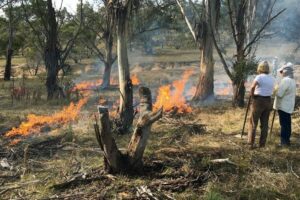
This new local project, Fire for Healthy Country, is working with Dja Dja Wurrung and DELWP. The Talking Fire project is planning a Djandak Wi cultural burn in the Muckleford Forest. Djandak Wi is the term used by Djaara – Dja Dja Wurrung people, the Traditional Owners for our part of Central Victoria – for the process of returning cultural fire to Country. The project seeks to deepen and transform our understanding of how to care for our local landscape by bringing Djaara knowledge and experience into a practical experience of using fire as a way of caring for Country.
There will be three Community Workshops and bookings are now open, with the first workshop on Saturday 14 August. Numbers are limited and to attend the actual burn you need to go to the first workshop and do some pre-training – the details are all on the Talking Fire website where you can also book: webpage. Tickets are $10 to each workshop to help cover costs.
You might also like to look at some of the resources on Aboriginal cultural burning that we have added to our Resources page. There are also some further updates on this page where we report on the 2018 Reviving Indigenous burning practices in a changed landscape: Community Search Conference.
For updates, follow Talking Fire via our website or facebook or drop us a line at newsteadtalkingfire@gmail.com.
26. Local Markets and MaLETS
With a motto of Eat locally grown food in season, MaLETS encourages weekly shopping at markets. Freshly picked, locally grown, low miles travelled, home cooked, yummy food for you & your family.
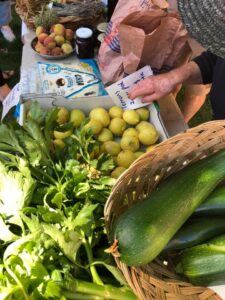
Next Castlemaine Farmer’s Market: Sunday September 5th, 9am to 1pm at the Information Centre in Mostyn Street, Castlemaine.
Midweek Markets: Wednesdays, 2:30pm to 5pm @ Western Reserve Forrest Street. Castlemaine.
Maldon Community Market: Sunday September 12th: 9 to 1:30 @ Bill Woodfull Reserve. Maldon.
Second hand goods & craft items will be available for swap/sale @ the Maldon Community Market & Newstead Markets only.
Plants & seeds left with regular market members, we ask for your assistance to collect your plants and seeds for review after a month.
Handmade soaps & shampoos are available at every market
What to do in the garden in August?
Stay inside by the fire, walking in the Castlemaine rain, enjoy lockdown, cooking hearty soups, use the slow cooker for those yummy stews, have a lovely bottle of red wine occasionally. Prune roses, fruits trees, clematis, hydrangeas. Mulch, Mulch, Mulch the garden beds. Winter colour Cyclamins & Helliabores. Plant out deciduous trees. Plant out Broccoli, Brussel sprouts Cabbages, kale, leeks & parsnips. Leafy crops such as chard, parsley & gorgeous rocket of course.
27. Radius- a new gallery supporting local artists
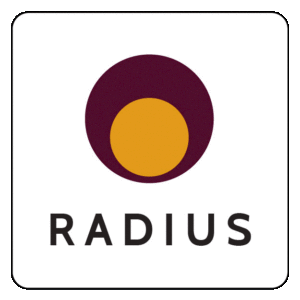
An art space for the inspirational creative
people living in a radius around Hepburn Springs.
Radius Photo- Exhibition Dates: Opening 11th September – 17th October 2021.
28. Repair Cafes and Workshops
Castlemaine
The Castlemaine and surrounds Repair Cafe is still going strong on the last Sunday of the month 10am till 1pm. New repairers and helpers are welcome. Just sign up at a Cafe.
Bring along broken household appliances, sewing repairs, picture frames and even wooden chairs, small boxes etc. Wood repairs need to be booked. The Cafe is at the Community House, 30 Lyttleton St. Come to the back door through the community garden. For further info contact Chris on 54705508.
Next Cafe: Sunday September 26th, 10am- 1pm, at Castlemaine Community House
Daylesford
In spite of one cancellation due to lockdown, Daylesford’s Repair Cafe continues to be well attended on the 3rd Sunday of each month. At the August Cafe, Jackie McAlister delighted many by teaching us various daring techniques and thereby ensuring favourite socks, jumpers and other clothes were able to have a second or third life.
At Daylesford’s September Cafe there’ll be a Workshop on Understanding Electrics & electronic equipment
Next Cafe: Sunday September 19th, 1pm to 4pm, at Victoria Park Pavillion, Ballan- Daylesford Rd
Photo: Darning concentration at Daylesford Repair Cafe (Veronica Baker)
29. Frontiers Wars Memorial Avenue opened in Hepburn Shire
In July Hepburn Shire officially opened the Frontier Wars Memorial , located in the magnificent stand of manna gums near Daylesford’s Avenue of Honour, on the Daylesford-Malmsbury Road near Coomoora.This site is an ongoing reminder to acknowledge the Aboriginal lives lost in defending their Traditional lands during early contact and ‘settlement’. This is the first of its kind in Australia and is evidence of leading the way with reconciliation. Djaara CEO Rodney Carter spoke of the significance of the Avenue in acknowledging the truth of our shared history and laid a wreath together in memory of the Djaara lives lost.
Here’s a short video of the opening ceremony: short video (1 minute) or full length (16 minutes).
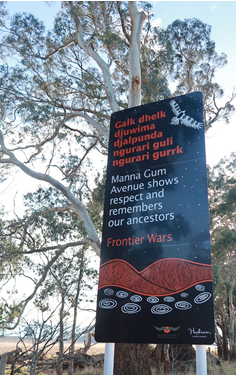
Extracts from Yandoit’s Erica Higgins speech at the Memorial Avenue opening
Yandoit’s Erica Higgins is a member of the Shire’s Reconciliation Action Group. She spoke at the opening of the memorial avenue. In addition to acknowledging and paying respects to the traditional owners here is some of what she had to say:
I need to pay my respects also to some who have been important in guiding me to a better understanding of the history of this country- firstly Edgar Morrison (father of Yandoit’s Don Morrison) who wrote his books on the history of this area and plainly spoke of massacres, murder and the forcible removal of the Dja Dja Wurrung and others, first from their lands and then to the Franklinford protectorate and then to Corranderk. This was written in the ‘60’s when many believed the Dja Dja Wurrung were ‘extinct’ and that the past was buried and forgotten. I also need to acknowledge the work done by cultural officer Jim Remedio in the ‘90’s to register places of cultural and historical significance, who paved the way for the strength of the Dja Dja Wirrung today in having their custodianship of the lands resurge. Both of these men taught me the history of settlement and of the violence and indifference that was perpetrated in the name of progress.
While we can now openly speak of this painful part of our shared history, we need to remind ourselves that this did in fact happen,to not only men who were warriors defending their land, their rights, their laws and their families, this was also perpetrated on women and children.
Today we have done something pivotal in our history in Australia , not just for our ‘little local community’ . We have formally acknowledged that the frontier wars had uncounted victims, that the frontier wars continue to cause pain to the Dja Dja Wurrung and to those of us who have tried to understand and to empathise.
So let us not forget that the traditional owners are with us to this day and that we have a huge amount of work ahead of us together, as part of our efforts towards truth telling and healing. Today, to paraphrase Neil Armstrong, this is one small step for Hepburn Shire and one giant leap for Australia. By acknowledging the wrongs and setting up a place for us to remember and reflect, we are starting to work together in a way that hasn’t happened before. These beautiful trees are a symbol of what was here- survival, beauty and endurance.
Hepburn shire’s website also has sound bites to the Dja Dja Wurrung language (Reconciliation & Recognition )
30. Wombat Forest Care- Wombat-Lerdederg National Park & more
Wombat Forest Care has contributed towards the State Government’s creation of Wombat-Lerderderg National Park. On 24th June the Victorian Government formally tabled their response to the Victorian Environmental Assessment Council’s (VEAC) Central West investigation report. Three new National Parks will be created. Areas with high conservation values are to be included in the new National Park, conservation parks and nature reserves. Areas around townships will be designated regional parks, which will allow for activities such as dog walking, horse riding and fossicking. Domestic firewood collection will be available until June 2029. However, the legislation needs to be promptly enacted to ensure that these forests are permanently protected.
The recent announcement of the three new National Parks was the result of a long battle to have the conservation values of central Victorian forests recognised.
While this represents an enormous step, much uncertainty remains as to when and how park status will be implemented.
Wombat Forestcare Inc. is dedicated to preserving the biodiversity and amenity of the Wombat State Forest, Central Victoria, Australia, by utilising the skills and resources of the community. By becoming a member you will have input into our activities and projects, and give support to caring for our forests.
For memberships and further information contact Gayle Osborne, (03) 5348 7558 or email info@wombatforestcare.org.au
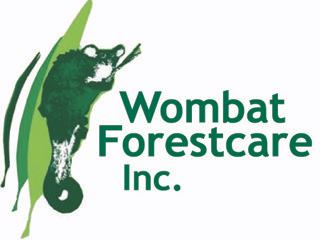
In the group’s July newsletter there’s information about:
- Resilience of the Wombat Forest: Changes in climate are affecting forest ecosystems worldwide. Research shows that trees in the Wombat Forest are generally very resilient to seasonal changes in climate. Watch this informative talk, delivered by Prof Stefan Arndt- School of Ecosystem and Forest Sciences at the University of Melbourne: https://www.youtube.com/watch?v=Py0p42_ZNho
- The Australian Owlet-nightjar: One of our most widespread nocturnal birds, found throughout the country in a range of treed habitats, except rain-forest. However, trying to see one, especially at night, is no easy feat. Unlike many other arboreal animals of the night, Australian Owlet-nightjars have very little reflective eye shine making them extremely difficult to pick up by torchlight. Not what you’d expect from a bird with such large prominent eyes. Daytime is spent tucked away in tree stumps or small hollows, often low to the ground, but they have been observed roosting in all sorts of man-made structures; open metal piping on sheds and gates,for example. Australian Owlet-nightjars can be found throughout the Wombat Forest. While they can be hard to see, luckily they are reasonably vocal with a main call that is fairly recognisable. This is a high-pitched, sharp but somewhat sad chirr, emitted at regular intervals, often 3 – 4 seconds apart. These seemingly delicate and defenceless birds are still reasonably abundant, not featuring on any threatened species lists as yet.
- The big storm: An extract from Gayle Osborne: On Wednesday evening, 9th June, a storm of never remembered ferocity ripped through the Wombat State Forest, as well as the Dandenong Ranges and parts of Gippsland. By Thursday morning the Wombat Forest landscape had been dramatically altered, large trees uprooted, other snapped off and swathes of forest flattened. In an effort to put this event into perspective I turned to Ron Hateley’s book “The Victorian Bush: its ‘original and natural’ condition”. Ron researched the observations of our early explorers and settlers and documented the extreme wind events they experienced. He provides references for a number of tornadoes in the 1800’s and these describe events that are similar to the wind event west of Daylesford in 2015. These events were extreme but localised. From these early records there is only one description of an extensive storm/wind event, which occurred in November 1897. Ron describes it as “when a series of strong tornadoes swept across the colony from near the South Australian border to Warragul, east of Melbourne. We need to consider that the Wombat Forest is a regrowth forest, having been cleared for timber and gold mining in the 1800s and then over-harvested for timber in the late 1900s. Where there were once forest giants that were at least 200 years old, there are now much younger eucalypts growing closer together. Swathes of trees that were probably 80 to 100 years old have been uprooted and lie on the ground like ‘pick up sticks’. It is distressing to all of us that these trees that have been growing for so long, that were habitat, that provided blossom for birds and insects, are no longer standing. There are massive areas of destruction around Bullarto and other parts of the forest, but there are also sections of the forest barely touched by the devastating winds. We should look in awe at the large old trees that have withstood this wind event. The branches they have dropped will allow for the creation of hollows.
- Ecological Vegetation Classes: The Wombat forest contains a diverse range of native plant species that occur in over 30 distinct plant communities. Plant communities are groups of plants that grow together sharing similar environmental conditions such as climate, geology, soil type, aspect, altitude and position in the landscape. Each plant community in the Wombat forest provides different types of habitat and resources for native fauna to varying degrees. In Victoria, most plant communities have been formally described and mapped and are called Ecological Vegetation Classes (EVCs).
For more information on these topics go to http://www.wombatforestcare.org.au/newsletters/WombatForestcareNewsletter56_July_21.pdf
31. Platypus search- Citizens science project in our waterways
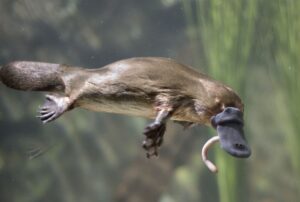
North Central Catchment Management Authority is part of the Great Australian Platypus search, a new citizens’ science project, which kicks off in August. It will collect much needed data on the threatened species. This is the largest citizen scientist project in Australia’s history, and is a crucial first step to reversing
platypus population decline. Earlier this year, the unique and iconic species was listed as Threatened in Victoria for the first time, sparking the inspiration for this project. In response, the Odonata Foundation proposed a state-wide survey in Victoria during the 2021 platypus breeding season (August-October). This project will map the entire distribution of platypus throughout Victorian waterways to help inform future management solutions to elevate its status from Threatened.
Citizen scientists, including school students, children and community groups can participate with limited training or experience.
Go to The Great Australian Platypus Search website for more info and to join the search. https://www.thegreataustralianplatypussearch.org/
32. Master Tree Grower- Community of Practice
Do you have a need for trees, and a desire to build your knowledge and know-how? Do you want to ensure your trees are a valuable asset and don’t ever become a
liability? The Australian Agro Forestry Foundation believes that to create more productive farms, sustainable landscapes and resilient communities, we need to use trees – and to use them wisely. Trees can be used as tools to protect assets, build natural capital, and restore carbon, water and nutrient cycles while producing useful and valuable products: renewable materials and energy as well as food and botanical products.
The Australian Agroforestry Foundation (AAF) plans to build a community of regenerative practice focussed on the strategic utilisation of trees and shrubs on farms. The Australian Master Tree Grower is a celebrated training program that aims to give participants the knowledge, resources, and networks to put trees (and shrubs) to work on their land for climate, biodiversity, and material (production) benefits.
If you are an Australian resident interested to build your knowledge of regenerative forestry and/or to become a Master Tree Grower please head to our website to join (it’s free!): Home – Australian Agroforestry Foundation https://agroforestry.org.au/
33. Building drought resilience
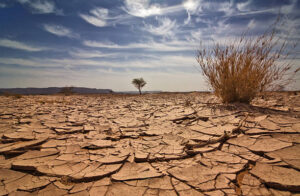
Funding is available through the Future Drought Fund’s Research and Adoption program to fund ideas and projects that help farmers and their
communities adopt innovative approaches to improve drought resilience. There are three grants available:
• Ideas Grant – providing $50,000 for one year.
• Proof-of-Concept grant – providing up to $120,000 for one year.
• Innovation grant – providing $300,000 to $1.1 million per year for up to three years.
Closing date: 9pm (AEST) Wednesday 8 September 2021
Questions about the Grants and EOI can be directed to 1800 020 283 (Option 1) or support@communitygrants.gov.au. Questions should be sent no later than 5pm (AEST) Thursday 2 September 2021.
34. Wild About Mushrooms-Alison Pouliot –a new book and a short film
Wild Mushrooming, A guide for Foragers is Alison Pouliot’s latest book written in conjunction with Tom May.
Alison has a passion for our local environment and for her beloved Wombat Forest. “My favourite thing about Daylesford is that it is surrounded by forest, creeks and rivers,” said Alison. “I’ve spent the last 25 years getting to know them and their inhabitants but there’s always more to explore and discover.”
Alison completed her doctorate at the Fenner School of Environment and Society at ANU in Canberra where she is currently an Honourary Fellow. She shares her time between Daylesford and Bern, Switzerland. Her research and teaching take her to places such as the Kew Gardens in London, the Royal Institute of Technology in Stockholm and The Rachel Carson Centre of Environment and Society in Munich.

Alison is the author of numerous articles about mushrooms and mushrooming. Her published books combine her love of nature and her exquisite skill as a photographer. In 2018, she published The Allure of Fungi, which explores the relationship between the forest and fungi and the fungus-fearing attitudes of humans. Her most recent book is Wild Mushrooming: A Guide for Foragers, co-authored by Royal Botanic Gardens principal researcher, Tom May. The book includes advice on how to find and collect fungi, provides a guide to distinguishing edible from poisonous fungi and includes a selection of recipes.
Alison has also produced a series of eight videos about fungi – The Forgotten Kingdom. The videos are informative and presented at a level that the average viewer will appreciate. Alison’s informative tour is accompanied by stunning photography. The videos are available on Alison’s website.
Each year, Alison holds a number of workshops and events in regional Victoria and metropolitan Melbourne. Her dinner and conversation events are well subscribed and you need to move quickly to reserve a place. While her local events for this year have concluded, Alison will be back in 2022 for more. See her website for details as they become available.
Alison’s recently published books about mushrooms and fungi are available for purchase through her website or from Paradise Books in Vincent Street, Daylesford.
35. Hepburn Wind – Community Power Hub and renewable energy
Hepburn Wind is leading the ‘Hepburn Branch’ of the Grampians region Community Power Hub (CPH) thanks to funding from Sustainability Victoria and the support of Ballarat Renewable Energy and Zero Emissions Incorporated. (BREAZE Inc.), who is leading the regional CPH.
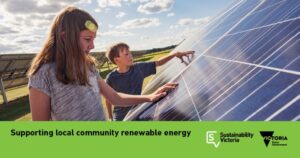
The aim of the program is to increase access to and involvement in community renewable energy by partnering with local community groups, farmers, businesses, schools and the broader community. This expansion of the Community Power Hub Program is an important aspect of the broader rollout of renewables across the Grampians region, to ensure communities are involved in and benefit from local energy projects as the state transitions to 50% renewable energy by 2030.
The program supports communities to create new energy projects designed to benefit the local region. These benefits range from reduced bills for community spaces and places, new job opportunities in regional areas, to more mid-scale projects like our own wind farm. In Hepburn Shire we’re looking to support community facilities, public housing, businesses, farms, and the broader community to become more energy-efficient and reduce their energy expenses.
Our first step as the Hepburn Branch will be to connect eligible community facilities with the new Community Climate Change and Energy Action Program, from Sustainability Victoria.
This program has two streams:
- Stream one: complete an audit to assess what your facility might need, which is worth up to $5,000.
- Stream two: implementation funding up to $25,000 or $50,000 dependant on the type of project (50% cash contribution necessary)
We are offering to support eligible groups and facilities to get quotes, apply for grants, deliver projects and seek co-funding where needed. If you work with or know of a local community facility please fill in the form at this link or email projects@hepburnwind.com.au.
Eligible types of facilities include, but are not limited to: church schools; churches; community child care centres; cultural organisations; environmental protection organisations; neighbourhood associations; public museums and libraries; scientific organisations; scouts; sports clubs; traditional service clubs; not-for-profit aged care homes; homeless shelters; disability service organisations; universities and colleges; and animal welfare organisations.
36. Acting Courses 2021
The Hobos offer several acting courses across Central Victoria each year. Whether you’re an experienced actor or someone who has always wanted to give acting a go, Hobo Playhouse has a course for you. Courses are provided in Maldon, Creswick and Castlemaine.
Here are the key dates for 2021 (Covid restrictions permitting):
Let’s Act – An Introduction to Method Acting
The next Let’s Act – Introduction to Method Acting course will be held in early 2022.
Scene Study
Castlemaine – February- April COMPLETED
Creating a Character
Creswick – Mondays 7pm-9.30pm. July 19-September 6 – 1 PLACE LEFT!
Castlemaine – Tuesdays 7pm-9.30pm. September 14-November 2 – BOOKINGS OPEN AUGUST 1
Improvisation
Castlemaine – Sundays 11am-noon. August 8-September 26. BOOKINGS OPEN JULY 1
One Day Workshops (TBA)
Introduction to Method Acting Intensive
Impulse Acting
Script Analysis
Personalisation
About the courses
All courses run for eight (8) weeks and each session runs between 2-2.5 hours. There are only six (6) places available in each course. The classes are best suited to actors aged 18 years and over.
Let’s Act – An Introduction to Method Acting focuses on the priniciples set out by Stanislavski and Strasberg. It includes a range of exercises to expand the actor’s five senses, imagination, concentration and emotional recall. Actors also learn a short monologue during the course.
Scene Study is where actors, who have some experience, are given a testing monologue or scene and they work on it until they nail it. The process enables actors to build their characters from scratch by utilising Method exercises, improvisations and character backgrounders.
Creating a Character is a natural progression from Let’s Act – An Introduction to Method Acting, but it is a stand alone course and anyone can do it. With this course, actors learn to tap into their unconscious and use their imagination and impulses to create a character. The emphasis here is on exploring creativity and opening the actor’s core or centre. The overall aim is for actors to ‘let go’, and immerse themselves in the character. It’s as much about personal development and expanding your creativity, as it is about learning to act. Students also do improvisations, character backgrounders and work on monologues and scenes during the course.
Improvisations are a great way to start a Sunday morning and get those creative juices going and it happens by being put on the spot and thinking on your feet. But make sure you’re wide awake because the fun sessions also see actors pushed out of their comfort zone with the use of time-outs and surprises. These sessions run for 1-1.5 hours.
Fees for the Let’s Act and Scene Study courses are $160 adults/$140 concession, as of July 1, 2021. The shorter Improvisation course costs $80 for the eight weeks.
Bookings and enquiries can be made on or after the advised dates (above) by emailing hoboplayhouse@yahoo.com or calling Jeff on 0457 843 551 to reserve your place.
For more info: https://www.hoboplayhouse.com/
37. My Home Network
The housing situation in Mount Alexander Shire is becoming increasingly difficult with rising rents and house prices. This situation has been developing for some years and has recently been made worse by the move to regional Victoria during and after the COVID lockdowns.

My Home Network is a group of organisations and community members that have begun to meet to discuss what can be done and now we want community input on two ideas.
- Establishing a HomeShare scheme- This type of scheme would enable home owners with spare rooms to let them to single people or a couple.
- Establishing a not-for-profit real estate agency An agency like this would enable local landlords in Mount Alexander have their properties directed to
people on lower and middle incomes. Essentially if you choose to list your property at a lower market rate with an enterprise that has Tax
Deductibility (DGR) status, you can claim the gap in rent as a tax deductible donation.My Home Network is interested in your responses to 3 survey questions: What housing stock or rooms are potentially available to rent? What interest is there in being part of these potential rental systems either as a tenant or a landlord? And, what barriers are there to people considering being part of these potential rental systems?Here is the link to the survey https://www.surveymonkey.com/r/FWVJQ82
My Home Network (MHN) is working with several innovative housing initiatives in our Shire, including:
- Mount Alexander Sustainability Group (MASG) social housing retrofitting project
- Castlemaine District Community Health (CHIRP) Tiny Homes Project
- Mount Alexander Shire Accommodation and Respite Group (MASARG) A Home of My Own housing project
- Mount Alexander Community Land Ltd
38. Seeking birdwatchers for surveys in 2021
Connecting Country’s bird monitoring program allows us to see if all our hard work restoring habitat is actually making a difference, and to assess the status of our woodland birds in the Mount Alexander region of Central Victoria. Back in 2010, with help from experts, we carefully set up a bird monitoring program at selected locations across the region. Every year we go back to survey theses sites, providing valuable information to guide future decisions.
These days, our surveys are done entirely by volunteers – our community champions.
We’re now looking for more people local to the Mount Alexander area to be part of this program and assist with our bird surveys.
To be involved in this program you will need to:
- Be able to confidently identify bird species in the Mount Alexander area by sight as well as from their call
- Have a reasonable level of fitness and able to traverse rough ground
- Know how to conduct a 2 ha 20 min area search (we can help with this)
- Liaise with private landholders
- Be comfortable navigating to and from survey sites using a GPS on your phone (we can help with this)
- Attend an online induction
- Follow safety protocols and adhere to current COVID-19 restrictions
We will support you, and can provide training on conducting surveys and navigation if required. However, having great bird ID skills is essential.
If you’re keen to be involved please email Jess Lawton (Monitoring Coordinator) including a brief description of your experience with bird identification and surveys, and a phone number: jess@connectingcountry.org.au
Posted on 6 July, 2021 by Connecting Country– https://connectingcountry.org.au/
39. Mining concerns – a local letter
In spite of the Covid pandemic, the population of planet Earth increases. And, as it heats up due to Global warming, so does the battle for it’s resources at the expense of our precious environment. In Klukwa Alaska, miners want to dig for gold and other precious metals at the expense of the salmon and tourist industries. In Mongolia, on the edge of the Gobi Desert, they want to frack deep into the sand for uranium. Closer to home, miners in Hepburn, Yandoit and Castlemaine, want to dig over our forests, farms and grazing land once again for gold. In all cases, the authorities, who also stand to gain from this mining, are “bending over backwards” to help them. Our Great Barrier Reef, now suffering from recent bleaching due to the warming of the oceans, has been on the World Heritage List for 40 years. For the first time in the history of World Heritage Sites, UNESCO has categorised our reef as “In Danger”. Whilst many of us are happy about this, incredulously, our government is opposed to this listing. I think this is a foolish move on the part of the Australian Government. The World Heritage Convention is a legal document and Australia, as a signatory, has a legal obligation “to protect, conserve and transmit to future generations the outstanding universal value of the Great Barrier Reef.” If you disagree strongly with this statement by our government as I do, please write to this publication and your local MP.
Trevor Scott, Castlemaine
40. Food for Thought
40.1 “Reimagining ‘Quality of Life’ and ‘Social Wellbeing’.
University of Newcastle and NENA series, on Friday 10th September, with globally renowned scholar and activist, Dr Noam Chomsky, together with Dr Ariel Salleh and Dr Gar Alperovitz.
Use this link to sign up and get your FREE ticket!
40.2 Starting and fine-tuning your co-operative!
Led by the NENA Cooperatives Hub – Wednesday 15 September
40.3 Regenerative songlines webinar link
40.4 Wellbeing Policy Design Guide
Prepared by the Wellbeing Economy Alliance (WEAll)
Read the Policy Design Guide hereand watch the recording of the policy launch event.
40.5 Significance to our health of gut microbiome
40.6 Local Futures Webinars – various speakers on food; climate; local emergency laws; structural policy changes; and systems change
- ‘Want Change? Focus on Food‘ with Vandana Shiva, Sarojeni Rengam, Colin Tudge, and Helena Norberg-Hodge. They argue against the corporate control of our food, while championing the ‘solution-multiplier’ that is a shift towards local food systems and peasant-led agroecology.
- ‘In Conversation: Camila Moreno‘ (or listen to it as a podcast). Camila shines a light on the insidious, profit-oriented framing of the mainstream climate movement, revealing that the international climate negotiations are a key site for the expansion of global, neo-colonial technocracy. She explains how food systems are being brought into climate discussions in a way that presupposes pseudo-solutions that will do more harm than good. View a short clip here.
- Stacy Malkan’s thoroughly researched critique of the high-tech food future promoted by Bill Gates and other corporate globalists. ‘Bill Gates has radical plans to change our food. What’s on the Menu?‘
- Short clip of Pat Mooney of the ETC group outlining the international trade rules and subsidies that must be opposed and reformed. Pat proposes “local emergency laws” to empower municipalities and nations to build up the resilient local food systems we will all need in the ensuing decades. Hear the full conversation with Pat, David Korten, Ronnie Cummins, and Helena Norberg-Hodge, and check out the work of the ETC group (Action Group on Erosion, Technology and Concentration).
- Short clip of Arnold Padilla of PANAP explaining why the localization movement must advocate for structural, policy changes. Bringing into focus the experiences of millions of Asian peasant farmers, he asks: how can community-led initiatives prosper in the dominant system in which trade is monopolized by transnational corporations? (This clip is taken from a World Localization Day 2021 discussion ‘Co-creating a Movement for the World We Want, Session 2’.)
- Sep 24-26: Helena Norberg-Hodge and Local Futures Programs Director Anja Lyngbaek will speak at the ‘Systems Change through Local Economies‘ conference.
40.7 Young Farmers Connect quarterly magazine
https://www.youngfarmersconnect.com/yfc-magazine
40.8 Against Nature Writing- Charles foster , published in Emergence Magazine

![[ Random Image ]](https://leanganook.org/images/image_12.jpeg)
